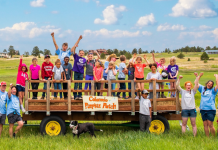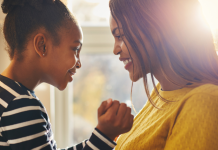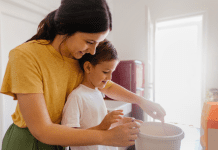I put my kids in cotillion classes. If you are not familiar, it is a series of classes where they learn etiquette (manners and social skills) and dancing (like the foxtrot, waltz and merengue).
You might think “Eww.” Or “Snobby.” Or “Useless.”
I thought it would be uber-cute, but mostly fluffy. When my daughter was in 3rd grade, I enrolled her mostly because I thought it would be cute and the thought of her dressed up wearing white gloves was just too adorable to not try it once. I was certain I would only enroll her for one year. I mean, how much can kids learn about manners at that age anyway?
A lot more than I expected.
This is our 4th year. And I now have enrolled my son, as well. Cotillion classes are held all over the country, probably more often in the South. There are varying approaches and different curriculums depending on the program.
At the cotillion that my children have attended, the evening starts with the children proceeding through a reception line of adult chaperones to shake their hands and practice introductions. After the receiving line, the kids are paired into couples to walk to a seat. They wait for the next couple to arrive next to them before they sit down. And then the lessons in social skills and dancing begin.
I was not sold at first, but after several weeks, I was struck by the number of social skills my kids were practicing. Screens, and many huge changes in how we interact with each other in our communities, have decreased the opportunities for kids to work on interpersonal skills. Cotillion was a great place to practice.
So here are (a few of) my reasons why I think cotillion is so valuable:
- Introductions. They learn how to introduce themselves, and introduce someone else.
- Handshakes. They learn how to look someone in the eye and give them a sincere handshake.
- Conversations. They spend most of the evening looking other people in the eye, making conversation and practicing how to listen and respond.
- Manners. They learn that using their good manners are should always be used to make other people comfortable around you, and good manners are never used to point out something about someone else that you think is bad manners. (I really like this point!)
- Dancing. Can I mention how much I like the dancing? I could go on and on… a lost skill, a lost art. And watching my 9 year old do the foxtrot is so darn charming. But how is it relevant to our day and age? I have put some thought into that. It is a social interaction. Kids having real face time in the era of Facetime is good for them. They work on what I would call social “micro-skills” – paying attention to someone’s expressions, responding appropriately, taking turns talking and listening, and communicating about the dance you are doing together. These are good for kids brains, bodies and their social skills. You do not get that on a screen.
- Eye contact. When introducing yourself, when speaking or listening, and while dancing is just so important. It is the cornerstone of relating to anyone on the planet.
- Social problem solving (in a controlled setting). Who to introduce first? How to navigate multiple dance partners? What should I ask this person in order to have a friendly conversation? They have to figure it out and repeat throughout each class.
- “Silent” soft skills. They learn to follow a dress code, show up on time, wait for others and listen.
In short, they are learning why manners matter
It is simple stuff, really. But in our age of omnipresent screens, it seems like kids do not get to practice social skills as much as they did in the past. This experience has made me more aware of the situations in which my kids are able to really work on their social and interpersonal skills – like youth group, volunteering, or Scouting.
I pay more attention to how they interact with others than I did before, and we have a framework to talk about social situations. It has been a great opportunity for great discussion.
And I still like the gloves.














